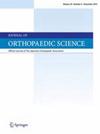What is the appropriate revascularisation approach in traumatic popliteal artery injury?
IF 1.4
4区 医学
Q3 ORTHOPEDICS
引用次数: 0
Abstract
Background
Popliteal artery injury (PAI) is sometimes accompanied by proximal tibial fracture or knee dislocation. We hypothesized that revascularisation approach should be selected depending on the associated injury. The purpose of this study is to propose revascularisation approach that does not interfere with definitive surgery.
Methods
Patients with PAI who were treated between 2013 and 2023 were included. Associated injuries, revascularisation approach, and skin incision for the definitive surgery were investigated. We investigated whether varus-valgus instability remained as an outcome.
Results
21 limbs with PAI were included. There were 6 cases with proximal tibial fracture. Medial incision was used in 2 cases and crank shaped incision in 4 cases. In 4 cases of crank shaped incision, osteosynthesis was performed through a crank shaped incision. There were 8 cases with knee dislocation. Medial incision was used in 1 case, S shaped incision in 4 cases, and crank shaped incision in 3 cases. In cases of S shaped incision, extra-articular ligament was repaired through independent incisions. In three cases of crank shaped incision, it was not possible to repair extra-articular ligament because of interfere with the initial incision. As a result, knee joint instability remained. There were 7 cases without proximal tibial fracture or knee dislocation. Medial incision was used in 1 case, S shaped incision in 3 cases, and crank shaped incision in 3 cases. There was no interference between the incisions for revascularisation and for definitive surgery.
Conclusion
For PAI, revascularisation approaches should be selected depending on the associated injury.
外伤性腘动脉损伤的适当血管再通方法是什么?
背景:腘动脉损伤(PAI)有时伴有胫骨近端骨折或膝关节脱位。我们假设应根据相关损伤选择血管再通方法。本研究的目的是提出不影响明确手术的血管重建方法:方法:纳入 2013 年至 2023 年期间接受治疗的 PAI 患者。方法:纳入 2013 年至 2023 年接受治疗的 PAI 患者,调查相关损伤、血管再通方法和明确手术的皮肤切口。结果:共纳入 21 例 PAI 患肢。结果:共纳入 21 例 PAI 患肢,其中 6 例胫骨近端骨折。2例采用内侧切口,4例采用曲柄形切口。在4例曲柄形切口病例中,通过曲柄形切口进行了骨合成。有 8 例膝关节脱位。1例采用内侧切口,4例采用S形切口,3例采用曲柄形切口。在 S 形切口的病例中,通过独立切口修复了关节外韧带。在 3 例曲柄形切口病例中,由于初始切口受到干扰,无法修复关节外韧带。因此,膝关节仍然不稳定。有 7 例患者没有发生胫骨近端骨折或膝关节脱位。1例采用内侧切口,3例采用S形切口,3例采用曲柄形切口。结论:对于 PAI,血管再通手术和明确手术的切口之间没有干扰:结论:对于 PAI,应根据相关损伤选择血管重建方法。
本文章由计算机程序翻译,如有差异,请以英文原文为准。
求助全文
约1分钟内获得全文
求助全文
来源期刊

Journal of Orthopaedic Science
医学-整形外科
CiteScore
3.00
自引率
0.00%
发文量
290
审稿时长
90 days
期刊介绍:
The Journal of Orthopaedic Science is the official peer-reviewed journal of the Japanese Orthopaedic Association. The journal publishes the latest researches and topical debates in all fields of clinical and experimental orthopaedics, including musculoskeletal medicine, sports medicine, locomotive syndrome, trauma, paediatrics, oncology and biomaterials, as well as basic researches.
 求助内容:
求助内容: 应助结果提醒方式:
应助结果提醒方式:


